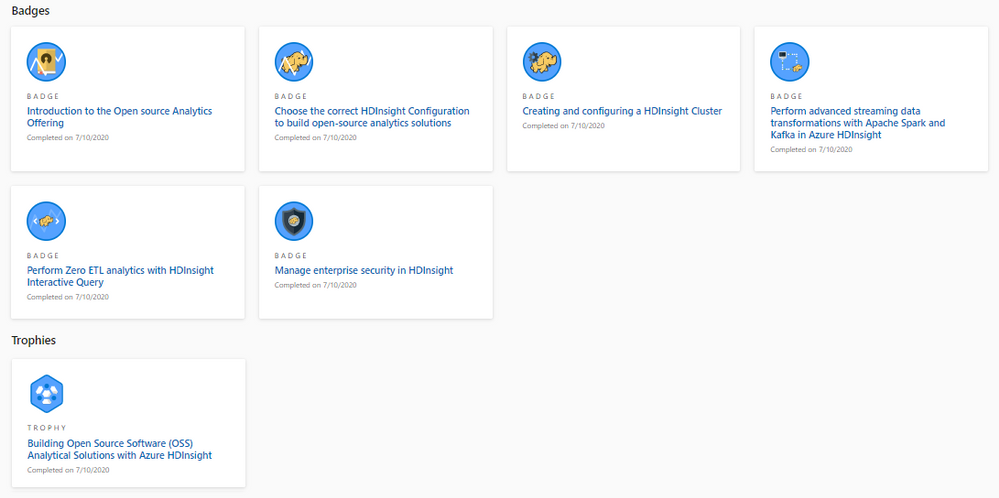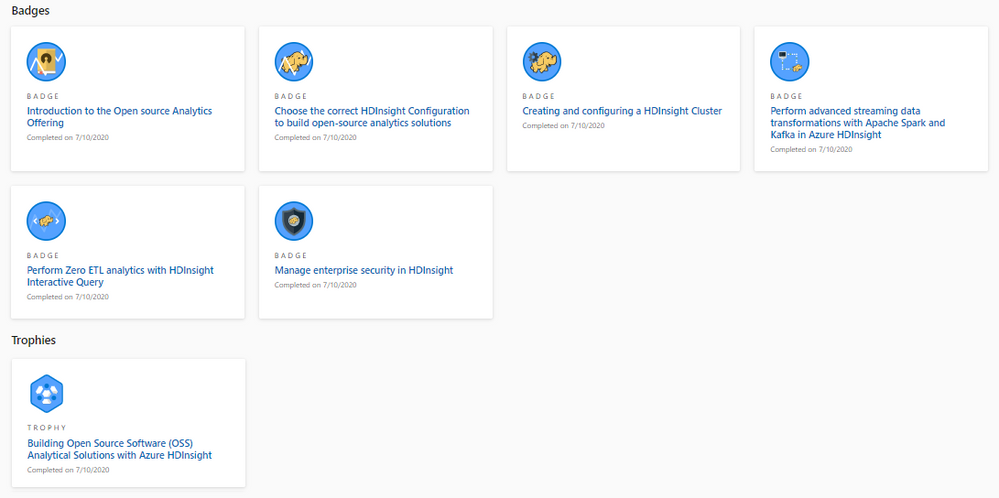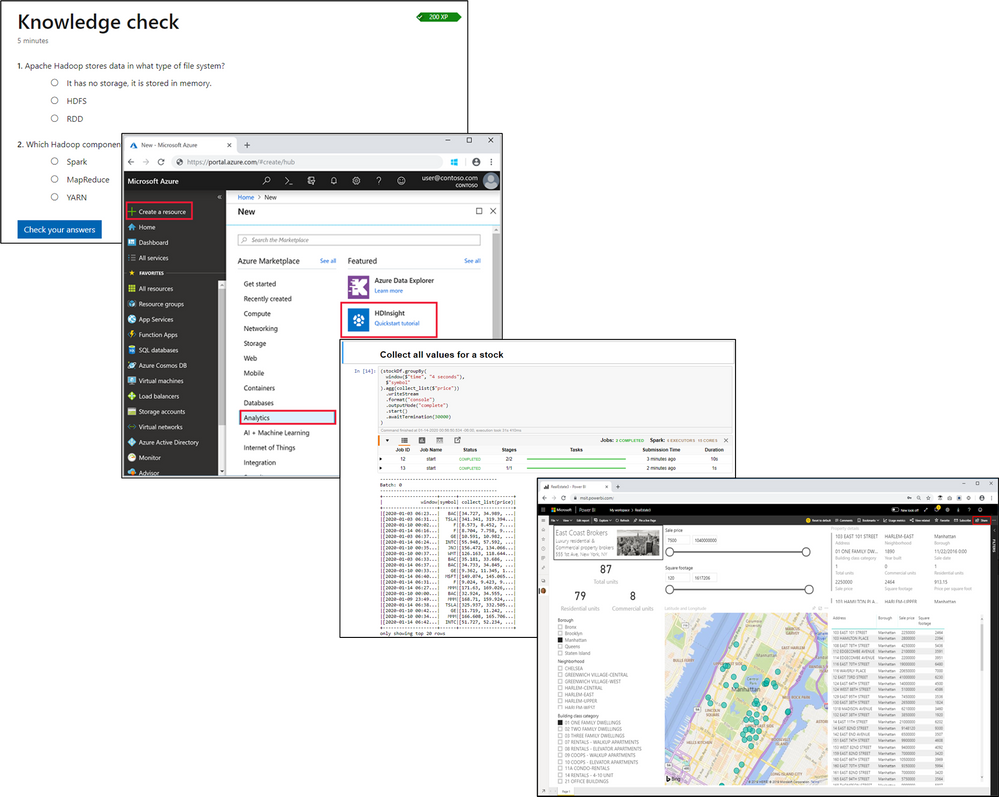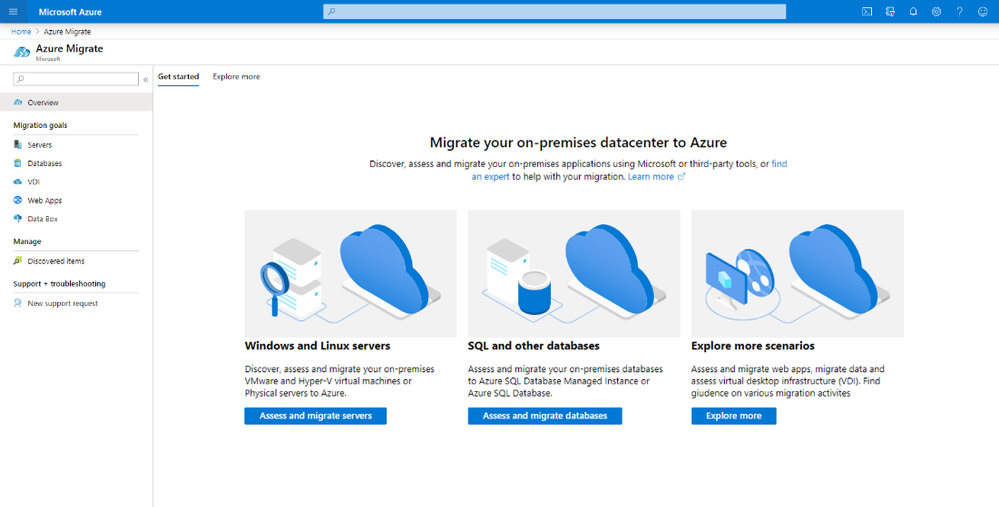by Scott Muniz | Jul 20, 2020 | Alerts, Microsoft, Technology, Uncategorized
This article is contributed. See the original author and article here.
Dear SSIS Users,
Azure Feature Pack 1.19.0 is here with an updated Azure Storage connection manager. Now you can configure Azure Storage connection manager to authenticate with shared access signature, and use it in Flexible File Task/Source/Destination.
This new version of Azure Feature Pack is pre-installed on Azure-SSIS integration runtime. To install elsewhere, you can download installation packages from the following links:
by Scott Muniz | Jul 20, 2020 | Alerts, Microsoft, Technology, Uncategorized
This article is contributed. See the original author and article here.
Update: Monday, 20 July 2020 23:42 UTC
We are aware of issues within Application Insights Live Metrics and are actively investigating. Some customers may not be able to access Live Metrics data in Azure portal.
- Next Update: Before 07/21 04:00 UTC
-vincent

by Scott Muniz | Jul 20, 2020 | Alerts, Microsoft, Technology, Uncategorized
This article is contributed. See the original author and article here.
This post is authored by @Mimi Gentz, Senior Product Manager at Microsoft.
You may have heard that Microsoft has a free learning platform that offers interactive material to help you up-level your skills. But did you know Azure HDInsight has a whole learning path, with over three hours of material available for you to learn how Azure HDInsight can meet your businesses growing need for analytics?
Whether you’re new to cloud scale analytics, interested in migrating your on-premises analytics to the cloud, or even if you’ve gone in depth with one of the open source technologies Azure HDInsight integrates with, this course will show you the benefits of using each of the cluster types available on Azure HDInsight, what scenarios work best with each technology, and how to integrate those technologies with visualization tools such as Power BI and Jupyter Notebooks.
There are currently six modules in the Building Open Source Software (OSS) Analytical Solutions with Azure HDInsight learning path (with more to come), and in this blog we’ll take a look at what you’ll learn in each one. Think of a module as a chapter in a book, and the learning path as the whole book. Throughout each module you’ll complete tutorials, read, and fill in short quizzes to check your learning.
Keep in mind that you can complete these modules at your own pace. Once you create a Learn profile and sign-in, your progress will be automatically tracked by the Learn site, and you’ll earn XP (experience points) as you go. As you complete modules and learning paths, you’ll earn badges and a trophy that you can share on social media to impress all your friends!

What will you learn in each module?
- In the Introduction module, you’ll learn how analytics (using open-source frameworks such as Hadoop, Apache Spark, Apache Hive, Interactive Query, and Apache Kafka) is implemented within Azure HDInsight, how storage and processing are decoupled (to save you money), and how Azure HDInsight, unlike its competitors, has a unique ability to support business processes that require multiple workloads.
- In the Choose the correct HDInsight Configuration to build open-source analytics solutions module, you’ll learn which HDInsight cluster type to select to best support your scenario and which processing and analysis business requirements Azure HDInsight supports. Additionally, you’ll walk through a sample case study to determine the best HDInsight cluster configuration to choose, and you’ll learn about some of the cost saving measures HDInsight provides.
- In the Creating and configuring a HDInsight cluster module, you’ll create an Azure HDInsight cluster in the Azure portal, create a Jupyter notebook that is linked to that cluster, run some queries on the data to create visual representations, monitor your cluster, and learn how to troubleshoot common issues.
- In the Perform advanced streaming data transformations with Apache Spark and Kafka in Azure HDInsight module, you’ll learn about common scenarios where Kafka and Spark can be used for real-time analytics and structured streaming, you’ll create a VNet and add a Spark and Kafka cluster to it, then you’ll create a Kafka producer and stream the data into a Jupyter notebook.
- In the Perform Zero ETL analytics with HDInsight Interactive Query module, you’ll learn how Interactive Query is great for ad-hoc analytics with minimal transformations, you’ll create an Interactive Query cluster in the Azure Portal, upload data using Data Analytics Studio, explore Hive tables using a Zeppelin notebook, and create a Power BI dashboard for evaluating real estate trends in the sample data.
- In the Manage enterprise security in HDInsight module, you’ll learn about the shared responsibility model, Network Security Groups (NSGs), HDInsight Service Tags, VNets, operating system security, authentication with AAD and MFA, authorization of specific actions and operations, data access security, Transport Layer Security (TLS) 1.2, virtual network service endpoints, and customer-managed keys.

Get started by going to Building Open Source Software (OSS) Analytical Solutions with Azure HDInsight and starting your learning path today. Feel free to post your feedback, issues, or requests about HDInsight learning content to this page or via the Feedback channel.
Thanks,
Mimi
Azure HDInsight Twitter | Documentation | Service Updates
Mimi Gentz Twitter | Linked In | Docs Achievements and Trophies
by Scott Muniz | Jul 20, 2020 | Alerts, Microsoft, Technology, Uncategorized
This article is contributed. See the original author and article here.
The Azure Service Fabric 7.1 second refresh release includes bug fixes, and performance enhancements for standalone, and Azure environments has started rolling out to the various Azure regions. The updates for .NET SDK, Java SDK and Service Fabric Runtime is available through Web Platform Installer, NuGet packages and Maven repositories in 7-10 days within all regions.
- Service Fabric Runtime
- Windows – 7.1.428.9590
- Ubuntu – 7.1.428.1
- Service Fabric for Windows Server Service Fabric Standalone Installer Package – 7.1.428.9590
- .NET SDK
- Windows .NET SDK – 4.1.428
- Microsoft.ServiceFabric – 7.1.428
- Reliable Services and Reliable Actors – 4.1.428
- ASP.NET Core Service Fabric integration – 4.1.428
- Java SDK – 1.0.6
Key Announcements
Potential 7.1 Deployment Failures:
- Cause: SF 7.1 introduced a more rigorous validation of security settings; in particular, requiring that settings ClusterCredentialType and ServerAuthCredentialType have matching values. However, existing clusters may have been created with ‘x509’ for the ServerAuthCredentialType and ‘none’ for the ClusterCredentialType.
- Impact: In the case mentioned above, attempting an upgrade to SF71CU1 will cause the upgrade to fail.
- Workaround: No workaround exists for this issue, as the ClusterCredentialType is immutable. If you are in this situation, please continue using SF70 until the SF71CU2 release becomes available.
For more details, please read the release notes.

by Scott Muniz | Jul 20, 2020 | Alerts, Microsoft, Technology, Uncategorized
This article is contributed. See the original author and article here.
In this installment of Zero to Hero with App Service, learn how to migrate your existing applications to App Service. If you followed parts one, two, and three then you already have an application on App Service, and you can continue to the next article.
Overview
There are multiple ways to migrate a web application to Azure App Service:
- Redeploy code using CI/CD Pipelines, Web Deploy, or the REST APIs
- Containerize your web application and deploy from a container registry
- Use App Service Migration Assessment Tool to migrate your ASP.NET, PHP web applications and Linux containers
App Service Migration Assessment Tool assesses whether your web site can be moved to Azure App Service. If your web site is public, you can simply provide your URL on this website to run the assessment. You can also download and run the assistant if your web site is hosted in a private environment. Post assessment App service Migration Assessment tool allows quick and easy migration of ASP.Net & PHP web applications running on IIS, and containerized web applications running on Linux operating systems to Azure App Service.
Step by Step Guidance
Please refer to Test Deployment and Migration Instructions for step-by-step instructions on migrating a sample ASP.NET web application to Azure App Service.
You can also refer to the Microsoft learn module for more information on how to migrate an on-premises web application App Service.
How the Tool Works
Please read How the Assistant Works for detailed information.
Readiness Checks
The App Service Migration Assessment Tool runs multiple readiness checks. The results of the readiness checks are used to decide if your app can migrate to Azure App Service. A comprehensive list of the checks is shown below.
IIS Server Site Checks
- Port Bindings
- Protocol
- Certificates
- Location Tags
- ISAPI Filters
- Application Pools
- Application Pool Identity
- Authentication Type
- Application Settings
- Connection Strings
- Framework
- Virtual Directories
For detailed information on readiness checks and possible remediation steps, see this article.
Linux Container Checks
- Linux Platform
- Container Volume
- Exposed Ports
- HTTP Traffic
Please read Linux Container Checks for detailed information on readiness checks and possible remediation steps.
Database Migration and Hybrid Connections
App Service Migration Assistant migrates the web application and associated configurations only, it does not migrate databases. There are multiple ways to migrate databases to Azure. Some options are listed below.
Your web application on Azure App service can also connect to an existing, on-premises database using Hybrid Connections.
Hybrid Connections allow your web application to securely access resources in other networks – in this case, an on-premises database. The migration tool configures and sets up Hybrid Connections for you, allowing you to migrate your site while keeping your database on-premises. You can then migrate your database later.
Azure Migrate Hub Integration
Azure Migrate provides a centralized hub to assess and migrate on-premises servers, infrastructure, applications, and data. The Migration assessment tool allows you to sync assessment data with Azure Migrate Hub for both successful migrations and migrations with blockers.

Summary
Using these resources, you can easily assess the migration feasibility of your .NET, PHP, and Linux containers. Once your migration assessment is complete, use the assistant’s step-by-step instructions to complete the migration to App Service. For more information, see the links below.
Helpful Resources
- App Service Migration Assistant Tool Website
- Migration checklist when moving to Azure App Service
- Linux Notes
- Release Notes
- Known Issues
- Azure CLI




Recent Comments